Public electric vehicle charging is a hot topic. Nearly every story on the topic is a barely disguised editorial for more “Level 3” or high-capacity DC chargers in more locations. However, in many locations, particularly workplaces, the slowest possible charging option may actually make more sense.
Related: Here's a Handy Electric Vehicle Vocabulary List
A Quick Primer On Charging an EV Almost every EV owner primarily charges their vehicle at home. This is true whether you poll top-end Tesla and I-PACE owners, or owners of used Volts, Bolts, Prius Primes, and Leafs. The reason this works best is simple. The vehicle sits unused and in your control for 12 or more hours at a time. Having the vehicle on a charger just makes sense.
Important Note: Electric Vehicle Terms: EVSE vs. Charger - What Does Each Term Mean?
There are three basic ways to charge. The first is with what is referred to as Level 1 charging. Basically a slow trickle on a common 115 V circuit similar to the one in any home. This type of charging location is by far the least expensive to provide, and it can deliver roughly 3 miles of range per hour the vehicle is plugged in.

Next up is Level 2. This method uses 230 V power and more amps on a larger circuit breaker to deliver a stronger flow of juice to the vehicle. The range miles per hour gained on the charger vary greatly since the amp draw can vary from what a 20 amp circuit breaker will allow all the way up to and beyond what 50 amp breakers and wiring can provide. But figure 10 to 25 miles per hour or more gained when charging to pin a minimum number on the Level 2 charge rate.
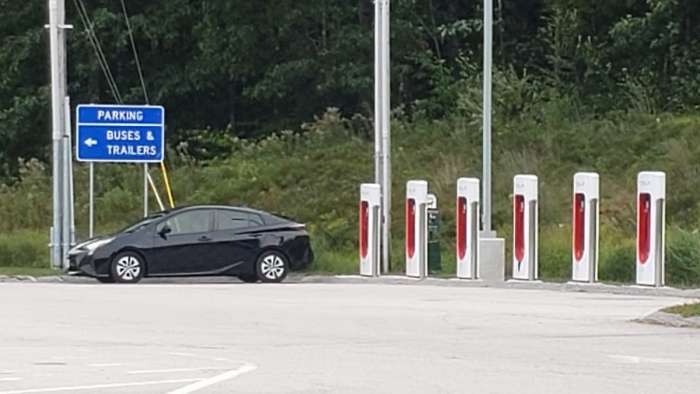
Last is what some folks call “Level 3.” This is DC fast charging and not all EVs can accept such a charge, though more and more new models will. This is the “best scenario” charging that is often discussed. Whenever you hear something like “Up to 80% charge in just 20 minutes!” DC fast charging is what is being discussed. DC fast charging locations are rare. Tesla has its own non-public network called Superchargers that can provide a very high rate of charge for its owners only, though this is about to change - slowly.
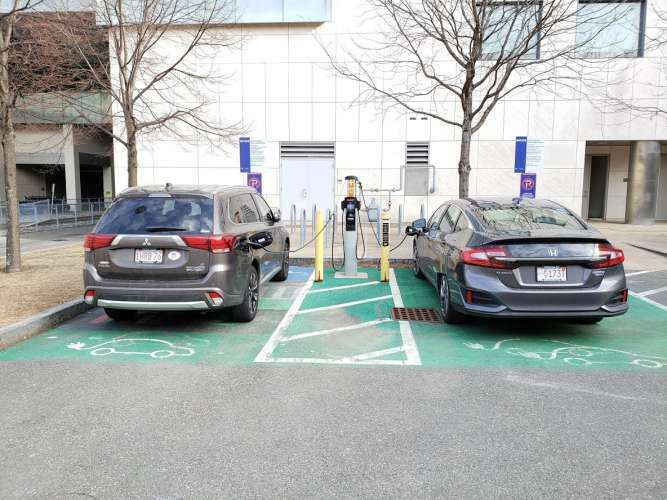
Think About How and Why People Charge In Public For our discussion here, let’s set aside one potentially large segment of EV buyers. Those who cannot charge at home where they reside for some reason. These owners are good people who want to drive an EV, but they will rely on others to be able to charge their vehicle. Why should society help them? You may have a dozen great answers, and I may agree with them all. However, these future EV owners do not represent the majority of the current-day buying public for EVs.
Related Topic: How One EV Owner Relies On Urban Public Charging - Yes It's Possible 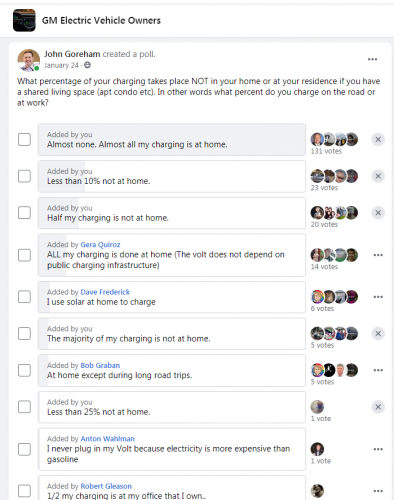
Those who can charge at home don’t really need daily public charging at all for day-to-day driving. With a household 115 V circuit and their mobile charger, they can add back roughly 36 miles each evening if they have 12 hours to charge up. If they have even the most basic Level 2 charger, they can add back about 100 miles or more each evening as they sleep. On days when the vehicle is not out of the house for the workday or high-use day, they can add back 240 miles minimum. Do they really need to charge away from home when they go to work or conduct their daily driving? It’s hard to see why they would need to.
Related: Everything You Need To Know About DIY Electric Vehicle Charger Installation
The Dumbest Places For Fast EV Chargers - Libraries, Retail, Airports, and Restaurants When EVs first rolled out, one of the most popular places for public EV chargers to be placed was the dumbest. Your local library. A lot of smart people frequent libraries, so it was odd that this was the first place public EV chargers became popular. Why is a local library a dumb place to put a charger? Setting aside the handful of staff, the occupants of the building are nearly all living in that community, and they don’t stay very long. Why must one charge up the EV they just took off of their home charger when they make a trip to a local library? How long is the drive? Maybe 5 miles at the most? And what services do libraries provide that would have a person onsite for more than an hour or two? There is no logical reason to charge at a library that has anything to do with the functions of a library. Local retail and food services spots are equally illogical places for charging. However, they do serve some road-trippers. We will get to that scenario later. But for those who live in the community or one nearby, why is charging logical if you are making a short trip from home and staying on-site an hour or two? Your EV was charging at home before you left. Why do you need to recoup the handful of miles to make the round-trip local journey?

Fast charging at airports for traveler parking never makes sense. It is a colossal waste of money. Parking an EV in an airport lot in a Level 2 charger spot and then boarding a plane is selfish and the polar opposite of green low-carbon living. Use rideshare or public transportation to get to an airport if you are trying to live green.

Charging In The Workplaces Workplaces are a unique opportunity for charging. Unlike those patrons of libraries, retail, and food outlets, many workers do drive a fair distance to and from work, and they do stay on site for quite a long time. Up to 12 hours is not uncommon, and nine or 10-hour shifts are the norm. Here, it absolutely does make sense to charge. But why charge at a fast rate? Why not simply charge using a Level 1 charger setup and recoup, say 30 miles of range? Wouldn’t that replenish nearly all commuters’ one-way battery range miles used to get to work? And couldn’t that same worker then plug in at home when they returned from the job at the end of their workday or shift? This scenario saves the ost of the EVSE charging equipment as well. EV users use their own mobile charger to plug in.
Level 2 and Level 3 Chargers Can Be Extremely Expensive While Level 1 Is Affordable
Imagine you are the owner or manager of a business, and you wish to achieve three goals for your employees. First, you want to provide them with as much pay as you can afford to. Second, you want to help them to commute to and from work in an electric vehicle. Third, you want to provide them with the easiest parking solution possible for them. If you want to achieve these three goals, inexpensive slow Level 1 charging makes the most sense.

Instead of a pair of extremely costly and potentially broken EV chargers (EVSEs), why not supply a couple dozen 115 V receptacles in the employee parking area at the same cost? Every electric vehicle is available with a mobile charger that can plug into such a receptacle. The workers can use it to plug in if they wish to charge. If they are onsite for 10 hours, they will recoup 30 miles of driving range. The person will park, plug in, work the shift, and remove the mobile charger when they leave. Since they only recoup the commuting range, the electricity cost to the employer is minimal. Since the charge rate is so slow, no visitor could effectively use that spot to recoup many miles of range in a short time. Thus, the receptacle-equipped employee parking spot does not “steal a charging spot from a visitor.”
The Smart Math On Workplace Charging Adding a Level 2 public charging station can cost between $6,000 and $13,000 per spot according to Property Manager Insider. Having installed many 115 V lines at my own rental property locations, I know that cost is 10X or 20X the cost to install a 115 V receptacle. If the parking location is indoors or covered, the cost is on the lower end, if outside, the higher end. The average cost to install a Level 3 charger or DC fast charge location is $50,000. One could install rows upon rows of 115 V receptacles for that same cost. Clearly, high-speed charging is never the best option for the workplace.
The Best Option For Most Businesses And Related Locations - A Mix
The UCLA Medical Center has a mix of on-site charging options. One worker posted the image above of her Toyota RAV4 Prime (PHEV) charging at a 115 V receptacle. Her employer provides the electricity at no added charge, and she reports that she is able to re-charge up to her vehicle’s full 42-mile EV range during her typical 12-hour shift at the Medical Center. This is a logical solution that fulfills both her and her employer’s goals. It also allows her employer to cost-effectively solve the charging needs of many of her fellow workers. The site also has faster-charging options using Level 2 charging stations. They are provided at no added cost for a short period of time. These make sense for those who may be traveling to the Medical Center as a patient, visitor, provider, or those visiting for business. They may have traveled farther, and they may be on-site for a shorter duration of time. Providing this group of people at the location with a faster charging option is logical. This mix of charger types may also be a good solution for hotel guests. Long-distance vehicle travelers may need fast charging. Those who are in rental cars or working at the location don’t. Slow charging can work for those groups.
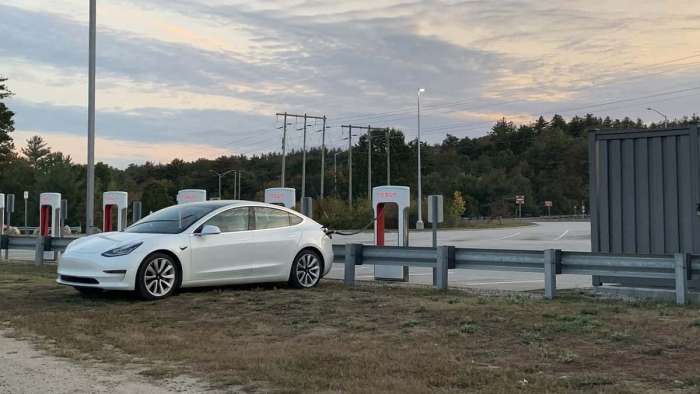
Road Trippers We promised we would address those who own EVs and who are traveling a far distance in them. Before we go too far, we must address the two main types of EVs. First, there are the battery-electric (battery-only) EVs. This group requires fast charging to be available when their trip is longer than the limited safe range of the vehicle. They are reliant upon public charging for the vehicle to work for them. Tesla has placed its Superchargers at logical locations for such travelers who own Tesla cars. There is no reason to reinvent the wheel. Those entities who wish to supply DC fast chargers or Level 2 charging should follow the Tesla example. Near highways, spaced out, and in areas where other traveler services may be nearby (bathrooms and food).
Related Story: This Percent of Toyota RAV4 Prime Owners Use It As An Electric Vehicle
The next group of EV owners does not rely upon a public charging network when they take a long-distance trip. Plug-in hybrid-electric vehicles called PHEVs (like the Honda Clarity, Toyota RAV4 Prime, Toyota Prius Prime, Mitsubishi Outlander, Ford Escape) and similar extended-range electric vehicles (EREVs like the Volt, MX-30, and others) never have to charge. They can operate using electricity for as long as their EV range lasts, typically 20-50 miles, and then can then operate as high-efficiency hybrid-electric vehicles for hundreds of miles more before stopping for liquid fuel. PHEVs and EREVs don’t require any special new assistance from society, employers, local government, or any other entity to supply public EV charging. If the charging is available, it can be used. If not, a PHEV or EREV is still a viable long-distance green transportation option that will operate as an EV over the majority of its lifespan. 
High Numbers of Public Charge Points Are Not Required For EV Success A recent study looked closely at how many public charge points are available for Evs by state. California is the EV leader in America by any measure. Yet, California does not have the highest number of public charge points per registered EV. Presently, California has about 124 public chargers for every 1,000 EVs. Wyoming has nearly seven times more chargers per EV than California. Vermont has about six times as many. Massachusetts, about three times as many.
A Misguided EV Vision The loudest voices calling for, advocating for, and often “reporting on” public EV charging want the personal transportation future to fit a misguided vision where public high-speed chargers mimic the outdated public gas pump model. Such a vision ignores the fact that most charging will be done at home by most future vehicle owners. There is no need for a widespread public fast-charging network for EVs to thrive. Slow charging works for most EV owners in most situations. For those who cannot charge at home, there are many great green vehicles like PHEVs, EREVs, and HEVs available right now that work perfectly well. And many more on the way.
John Goreham is a long-time New England Motor Press Association member and recovering engineer. He charges the EVs he tests at home on a Lectron Level 2 16 amp charger connected to a NEMA 6-20 receptacle. John's interest in EVs goes back to 1990 when he designed the thermal control system for an EV battery as part of an academic team. After earning his mechanical engineering degree, John completed a marketing program at Northeastern University and worked with automotive component manufacturers, in the semiconductor industry, and in biotech. In addition to Torque News, John's work has appeared in print in dozens of American newspapers and he provides reviews to many vehicle shopping sites. You can follow John on TikTok @ToknCars, on Twitter, and view his credentials at Linkedin


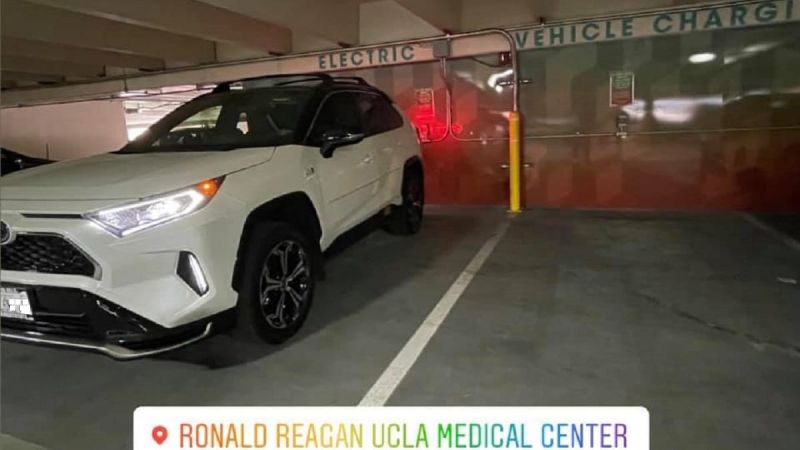








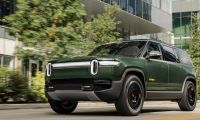
Comments
Good article. But you forget
Permalink
Good article. But you forget to address the urban adoption of EVs, people living without garages to charge at home. For those, it is important that the urban environment they live in have DC Fast Chargers located close-by so they can charge up once a week as needed, while hopefully getting Level 1 or 2 at work or other extended time destination.
Thanks, Rick. We didn't
Permalink
In reply to Good article. But you forget by Rick (not verified)
Thanks, Rick. We didn't forget though. This story is not a comprehensive look at all charging solutions for all owners and for all situations. We address occupants of housing without a charging option in the story twice. Our polling of GM, Ford, and Tesla EV owners reveals that more than 90% of EV owners primarily or exclusively charge at their residence. PHEV, EREV and HEV green vehicles are ideal choices for those who must rely on others to serve their charging needs today. Perhaps tomorrow more solutions will present themselves. The real question may be why are dense urban city dwellers owning vehicles in need of charging in the first place if a green lifestyle is their primary objective?
The charging challenge I
Permalink
The charging challenge I would like to see addressed is charging for inner city apartment dwellers. The specific issue here to my mind is the vulnerability of the charging apparatus, ie cord, plug, etc., which are open to simple vandalism. Remembering back to the days of public phones, these were often targets. The cords of these phones were actually reinforced in a metal sleeve and still got damaged or destroyed. I don’t think it will be practical for overnight street charging for the above reasons and fast chargers will be needed for urban settings so the owner can monitor ( guard ) their vehicle during charging. Gas stations would still be an option since it would allow the owners to charge with the availability of restrooms and snack shops. Many Tesla chargers are actually at gas stations and this seems like a workable solution.
If you add solar panels to
Permalink
If you add solar panels to the at home charge equation, it's a match made in heaven. Six to ten panels will supply most people's needs for a year of driving. Oddly enough, this is what one needs to cover a carport.
The central premise of this
Permalink
The central premise of this article is nonsense. Millions of people, in every major city and most middize ones, live in an apartment or closely-spaced house without parking. If you restrict EV charging to people with driveways or garages, you massively reduce the benefits of EVs. We need these people to have access to overnight L2 charging just like the suburban drivers the author assumes are the people who matter.
Where in the story does it
Permalink
In reply to The central premise of this by CB (not verified)
Where in the story does it say that apartment dwellers should not have access to charging? One of the focus points in the story is about workplace charging in one of America's densest urban areas.
"Those who cannot charge at
Permalink
"Those who cannot charge at home where they reside for some reason. These owners are good people who want to drive an EV, but they will rely on others to be able to charge their vehicle. Why should society help them?"
Uhh, what? So the 100k+ gas stations across the country are there to "help" ICE car owners, like some kind of charity? For an article that spends a lot of time calling people and ideas dumb, there are an awful lot of dumb assumptions in here, as well as absurd value judgments.
There are tens of millions of people who live in urban environments, many of whom may not have a reliable way to charge at home. There are also many reasons why a person may want to own an EV. There's nothing stupid about building a network of fast chargers to serve this market if folks are willing to pay (keep in mind, 98% of car owners today do not fuel up at home or work, they are very accustomed to driving to a station to refuel.)
Also get over yourself with your BS value judgments - you're not out there foraging for electrons, when you charge at home you're buying it from a utility company.
Thank you for your thoughtful
Permalink
In reply to "Those who cannot charge at by Nate (not verified)
Thank you for your thoughtful reply, Nate. The comment you quote was my way of trying to limit the focus of the story. How would you have limited the scope of the discussion to certain charging scenarios in a better way? I have not called anyone dumb or stupid in the story. I create content on the subject of home charging regularly. If you think that society should emulate an outdated model for managing vehicle energy, your opinion is as valid as anyone's.